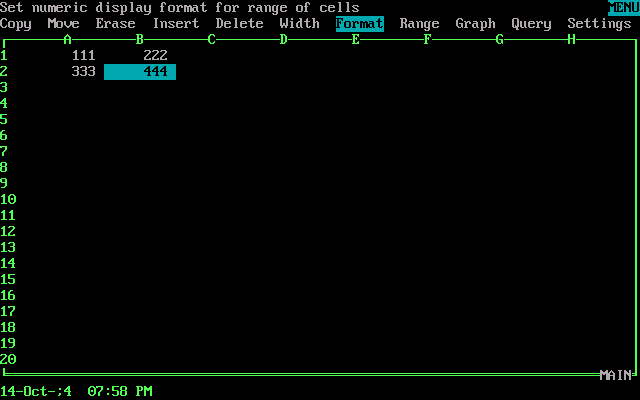Integrated Applications
It didn't take long for software companies to bundle their applications together for sale. This usually meant better value for the customer and more adoption of the software brand within an organisation.
Some went one step further and developed new software that combined the power of their standalone applications into a single product. These were known as 'integrated applications' which came under the category of 'productivity software', and later the term 'office suite' was coined, popularised by Microsoft Office (which never got a DOS release).
Integrated applications were sold under the key benefits of (a) all/most of the functionality of the main product, and (b) the ability to share information between the various applications. Embedding a portion of a spreadsheet or a chart inside a document, being able to dial a number directly from another application, or creating a mail merge from your database of contacts were just some examples.
This page provides downloads of some of the more popular Integrated Applications used during the DOS period.
The rights to Lotus Development Corporation's software are now with IBM after their buyout in 1995.
The rights to Framework are believed to be with Selections & Functions Inc., who
bought the rights from Borland after the Borland acquisition of Ashton-Tate in 1991.
Symphony Lotus Symphony is an integrated software program that combines five tools: spreadsheet - word processing, graphics, database management, and data communications - in one package.I have a dedicated Lotus Symphony page here at DOS Days. |
[Lotus] Works Formerly AlphaWorks from Alpha Software, Lotus Works is an all-in-one office suite for DOS that includes a word processor, spell check, spreadsheet, graphics, database, and communications. It targeted the lower end and first time computer buyers.It competed against other all-in-one office suites such as FrameWork, PFS First Choice, and Microsoft Works
|
Framework
Ashton-Tate's Framework first launched in 1984. Rather than being a distinct set of applications, it adopted a more generalised platform with a similar concept to Windows. You created 'frames' using a built-in programming language called FRED (Frame Editor). The tool allowed the user to break information into many smaller chunks that could be linked together logically.
|
Ability Plus Migent's Ability integrated application was most commonly remembered for being bundled with the Amstrad PC1512 and PC1640 computers.
|
Ability Plus Ability Plus v2.0 was released after Migent rebranded to Ability Plus Software UK in 1992. |
Ability Plus This is the final version of Ability Plus for DOS, available directly from the Ability Plus Software website in 2022. |





